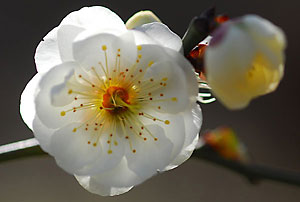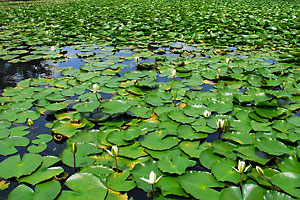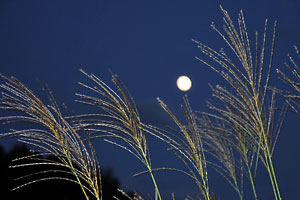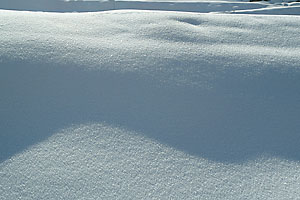" Haiku " is the shortest poetic form in the world, consisting of 17 syllables ― in three lines of 5,7and 5 syllables respectively.
Each " haiku " must always include a “ kigo ” or season word that refers to an animal, plant, event, or custom of the season.
It helps to suggest nature in people’s imaginations.
For example, the season word, plum blossom in the following " haiku "will bring to mind the warmth of spring and the scenery of plum blossoms in bloom in a garden or along a mountain path.
Similar are a little cuckoo in summer, beautiful moon in autumn and snow in winter.
Spring

『梅一輪 一輪ほどの 暖かさ』 嵐雪
『Ume ichirin ichirinhodo no atatakasa 』 RANSETSU
One plum blossoms single blossom’s worth of warmth
(
“ kigo ” : plum blossoms )
Summer

『 ほのぼのと 舟押出すや 蓮の中 』 漱石
『 Honobonoto hune oshidasu ya hasuno naka 』 SOUSEKI
In dan twilight pushing a little boat off into the loutuses
(
“ kigo ” : loutuses )
Autumn

『 名月や 池をめぐりて 夜もすがら 』 芭蕉
『 Meigetsu ya ike wo meguri te yomosugara 』 BASYOU
While I strolled around the pond viewing the great full moon, dawn broke
(
“ kigo ” : great full moon )
Winter

『 いざさらば 雪見にころぶ ところまで』 芭蕉
『Iza saraba yukimi ni korobu tokoro made 』 BASYOU
Come now , farewell ! I go snow viewing until I tumble down
(
“ kigo ” : snow viewing )
A glossary of season words for haiku poets is called as “ saijik i”. It is a guidebook of season words and examples of haiku classified into four seasons.
|
![]()

![]()
